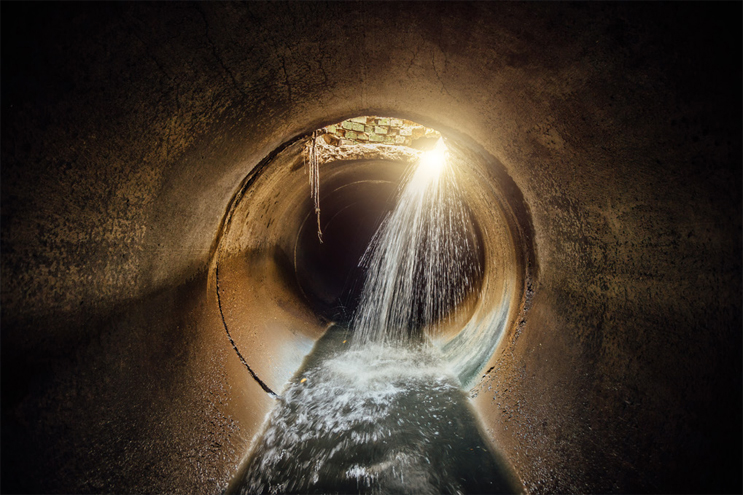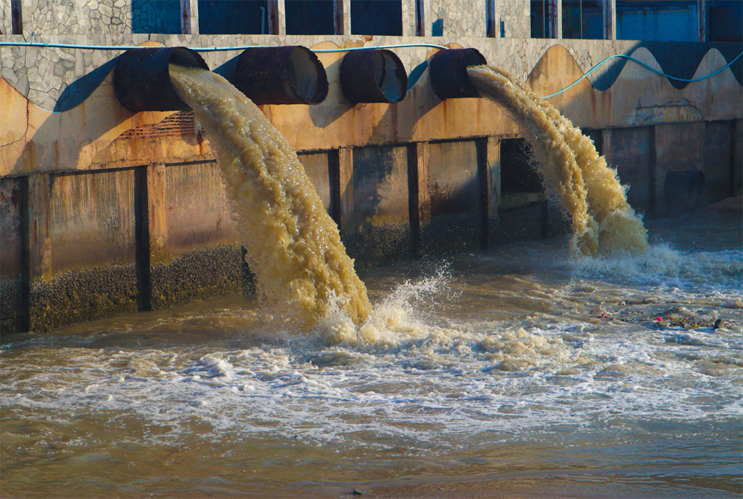The Future Of Wastewater: Why Has The U.S. Been So Slow To Adopt AI Tools?
By Caco Gilead Baibich

Wastewater analytics are already being used around the world to monitor contamination, optimize treatment processes, and catch environmental scofflaws. So why has the U.S. been so slow to adopt these technologies?
Artificial intelligence (AI) and machine learning have revolutionized our lives, but some sectors have been slower to adopt smart solutions than others. Despite AI systems underpinning everything from power grid regulation to Google’s search tools, water and wastewater services have only recently embraced data-driven technologies.
Finally, after years of lagging behind other industries, the wastewater sector is making up for lost time, and smart systems are taking off in Europe and the Middle East.
Adoption in the U.S., however, has been comparatively slow.
Wastewater treatment plant (WWTP) managers still show up at work not knowing what a city’s pipes will deliver that day. A surge of street runoff? Industrial pollution? With little insight into what’s coming, managers can’t optimize treatment processes. This creates an opportunity for infrastructure damage and the discharge of harmful materials.
Sure, managers know to expect surges of household water from flushing on weekday mornings and Super Bowl halftimes. They even know that dumps of used commercial kitchen grease happen late at night or on weekends when water inspectors are off duty. But even the best predictions and forecasts are still only estimations.
It doesn’t have to be this way. Other industrialized nations are already using accurate, round-the-clock data that alert WWTPs to contamination events, including the time the pollution will arrive at their plants. Cities such as Haifa, Israel, have positioned network-enabled, data-gathering units inside sewer networks to help users trace pollution or sound an alert when conditions change unexpectedly.

AI-driven technologies are detecting toxic materials long before they reach plants, allowing authorities to identify those responsible for contamination and increase process efficiency. In Italy, for example, AI helped Hera SpA, of Bologna, Italy, spot polluters while also cutting WWTP operating expenditures by 25 percent.
But in the U.S., surges of contaminated wastewater continue to regularly surprise, and even overwhelm, WWTPs.
While there are some such projects in the early stages of operation in the U.S., there’s a long way to go for this country to catch up with the rest of the developed world.
In just one example, sewage regularly floods beaches around Los Angeles,1 causing extended closures. Compare that to Haifa, where officials have installed live data reporting through 750 miles of pipes, supporting AI pollution modeling and enabling a 75 percent drop in beach closures.

What’s Holding U.S. Utilities Back?
There are several barriers holding up progress in the U.S.
Concerns about data privacy and security apply to wastewater AI, just as they do with all other industries. AI-gathered data must be regulated, verified, and validated, adding complexity to managers’ already heavy responsibilities.
Water utilities have traditionally been conservative institutions, resistant to change. For decades, their focus has been on stability rather than taking a chance on new technologies — even ones that could improve performance over time.
Finally, upgrading with new sensors, monitors, and tracking capabilities costs utilities time and money. Utility managers need to know that the capital investments will pay off.
But multiple factors mean it’s getting harder for U.S. companies to turn a blind eye to AI technology’s benefits.
The Biden administration has increased its focus on enforcing environmental regulations, with sharp penalties likely coming for companies that don’t abide by them. It has also signaled its intent to boost investments in wastewater infrastructure2 improvements.
The coronavirus pandemic showed how using sensors and AI analytics can allow epidemiologists to model and map outbreaks of COVID-19, helping authorities limit their spread.
Droughts throughout the U.S. have forced municipalities to find new ways to turn wastewater back into clean, potable water just to keep up with demand.
AI is finally being seen as a way to aid inspectors and regulators. Under current U.S. rules, industrial discharge is monitored on regular, predictable days. If a factory knows it will be tested for pollution on, say, every third Tuesday of the month, it can adjust effluent to dodge detection of hot loads. But a properly functioning, always-on AI system makes it nearly impossible to game the system.
Yet the U.S. is still dragging its feet, with consequences that can be costly. According to the American Society of Civil Engineers (ASCE), utilities spent more than $3 billion in 2019 to replace pipelines. The expenditure will only rise. Currently, 15 percent of the nation’s wastewater treatment plants have reached or exceeded3 their design capabilities, according to ASCE. Yet cities that embrace machine learning and AI technology, such as El Paso, Texas,4 can circumvent many of those problems entirely, while increasing efficiencies and cost savings.
With the price of inaction mounting each day and the tools to improve America’s wastewater infrastructure in smart, sustainable ways increasingly available, now’s the time to do what we can to secure our water future.
References
- https://www.independent.co.uk/climate-change/news/sewage-floods-santamonica-bay-b1883136.html
- https://www.whitehouse.gov/briefing-room/statements-releases/2021/06/24/ fact-sheet-president-biden-announces-support-for-the-bipartisaninfrastructure-framework/
- https://infrastructurereportcard.org/cat-item/wastewater/
- https://www.epwater.org/our_water/wastewater
About the Author
 Ricardo (Caco) Gilead Baibich is the chief technology officer of Kando (kando.eco).
Ricardo (Caco) Gilead Baibich is the chief technology officer of Kando (kando.eco).
